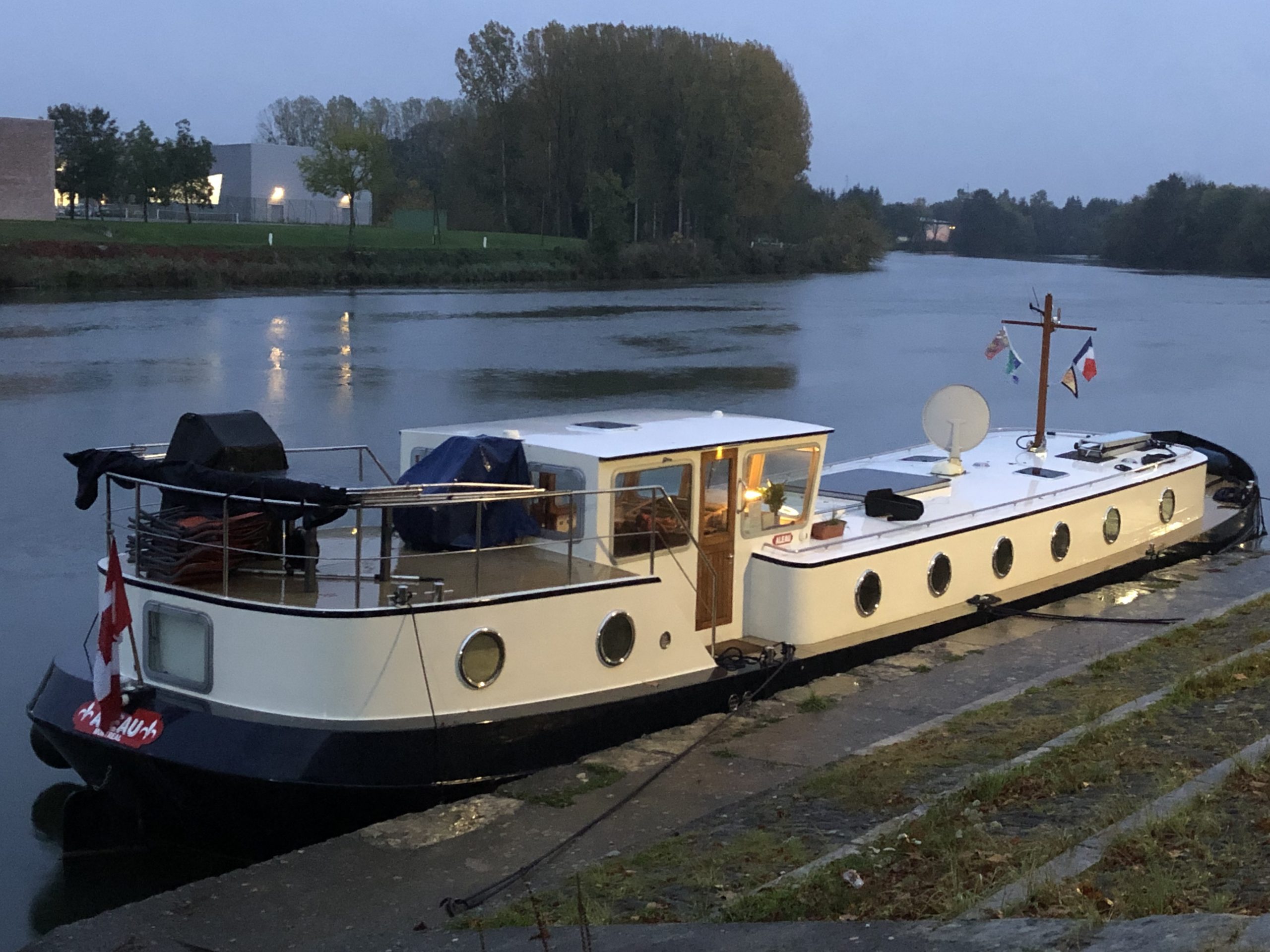Unfortunately, not very far – and not in the right direction.
Aleau has been moored at the far end (or the very beginning, depending on your point of view) of the Port de l’Arsenal – the marina in the heart of Paris. We are the last boat before the lock that leads onto the Seine.
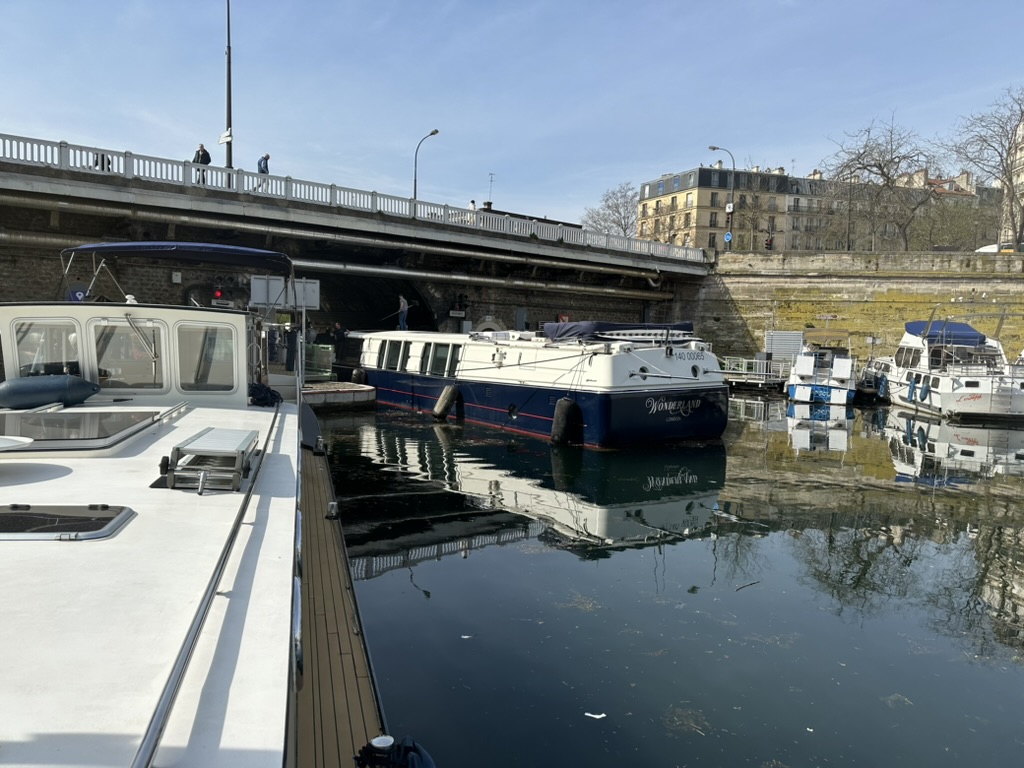
Aleau’s stern is facing the lock in the photo above – and away from it in the photo below. Similarly, the sun is shining in the photo above – and it is overcast in the photo below. This spring, it has been overcast on nice days – and pouring rain on not-so-nice days. There have been far more of those.
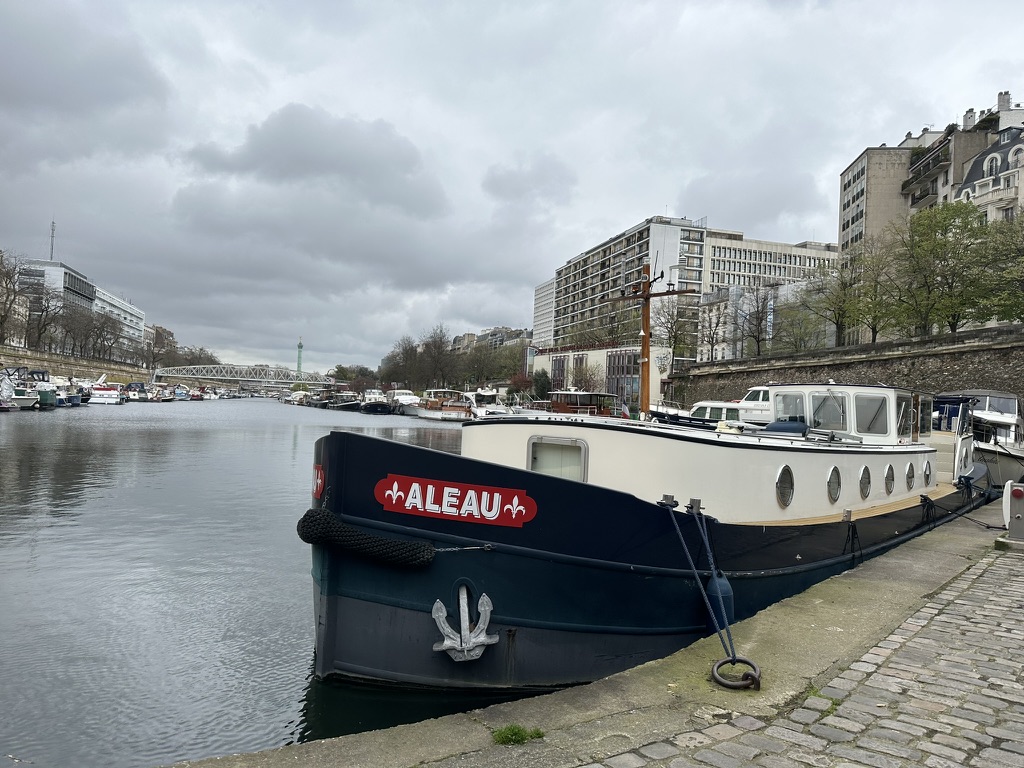
That rain has been a problem. And the reason this chapter is titled “Underway.” In the photo above, Aleau is in her usual spot, moored against the concrete dock. When the water in the marina rises, so does Aleau – as long as we loosen our ropes. If the water rises so much that it flows over the dock, so will Aleau.
We’re okay in the photo below. There’s no danger of us ending up on top of the dock. Or so we thought.
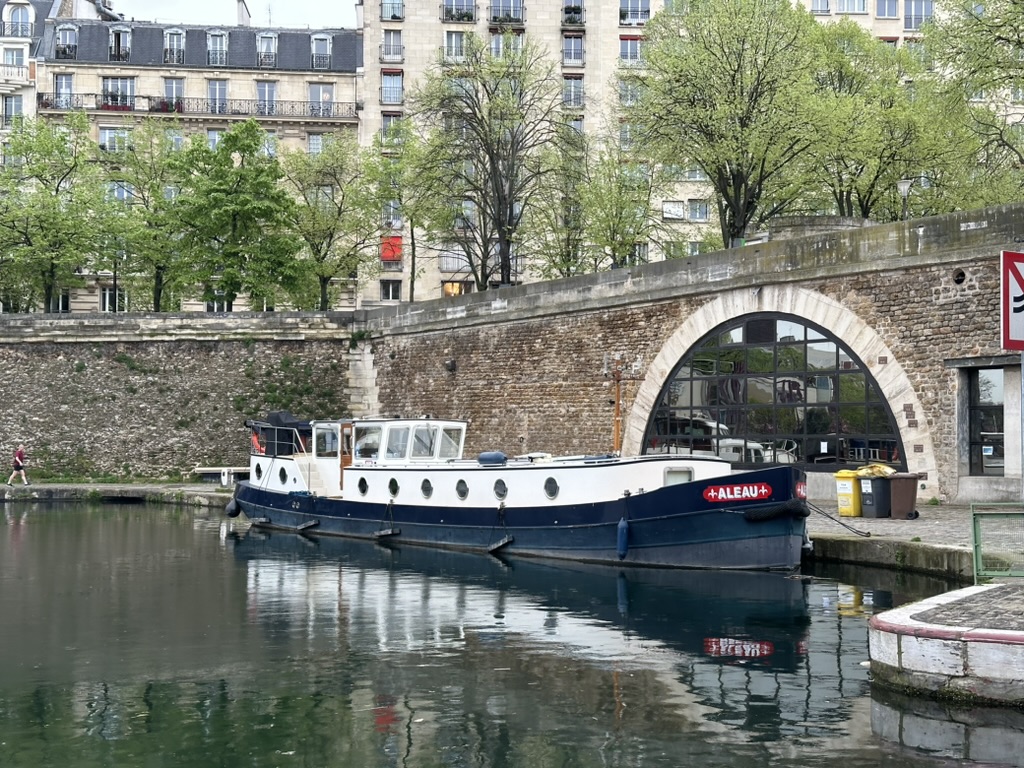
Turns out, there was a very real danger of that happening. Within hours, the water in Arsenal was rising quickly. The port office said we, and every other boat tied to the concrete dock, had to move. It wasn’t safe to stay. We were underway – but still stuck in Arsenal – with no idea when we’d be able to leave.
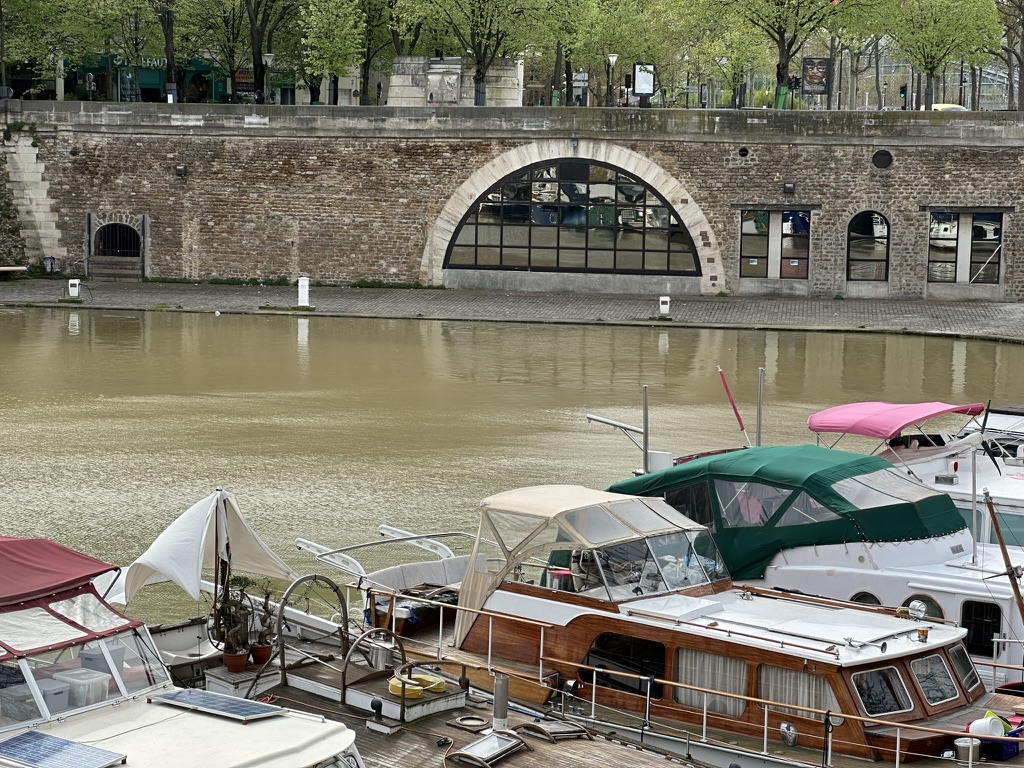
Flooding in Arsenal has happened. Plaques on the wall show how high the water has reached.
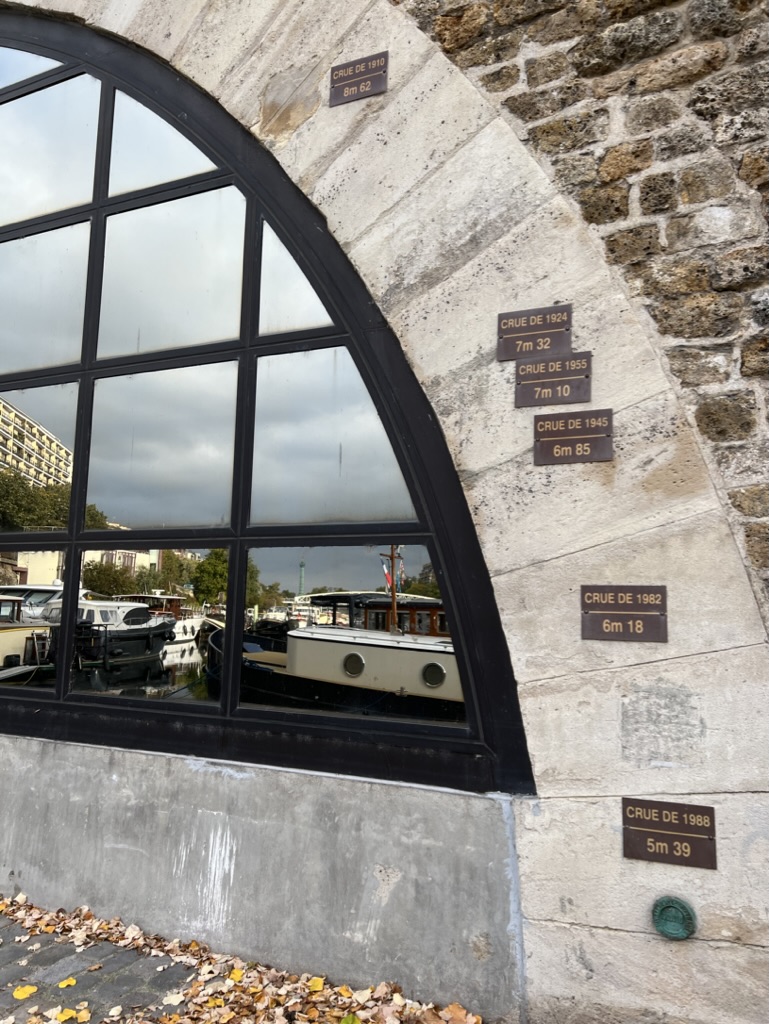
That’s us – at least our wheelhouse and aft-deck. We are rafted against the boat with the green roof – which is rafted against the boat with the red stripe – which is tied to a floating pontoon. Three abreast on the pontoon.
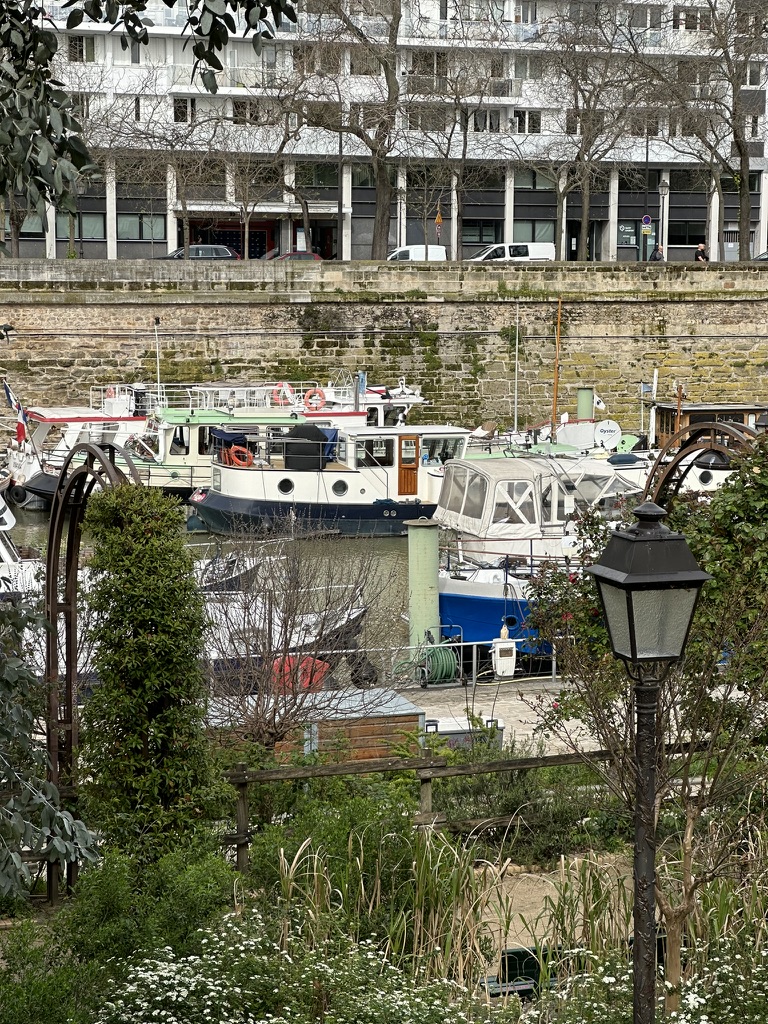
The floating pontoons rise up and down on green poles as the water level changes. The swans don’t appear to care. And neither do we – unless the water rises higher than the top of the poles.

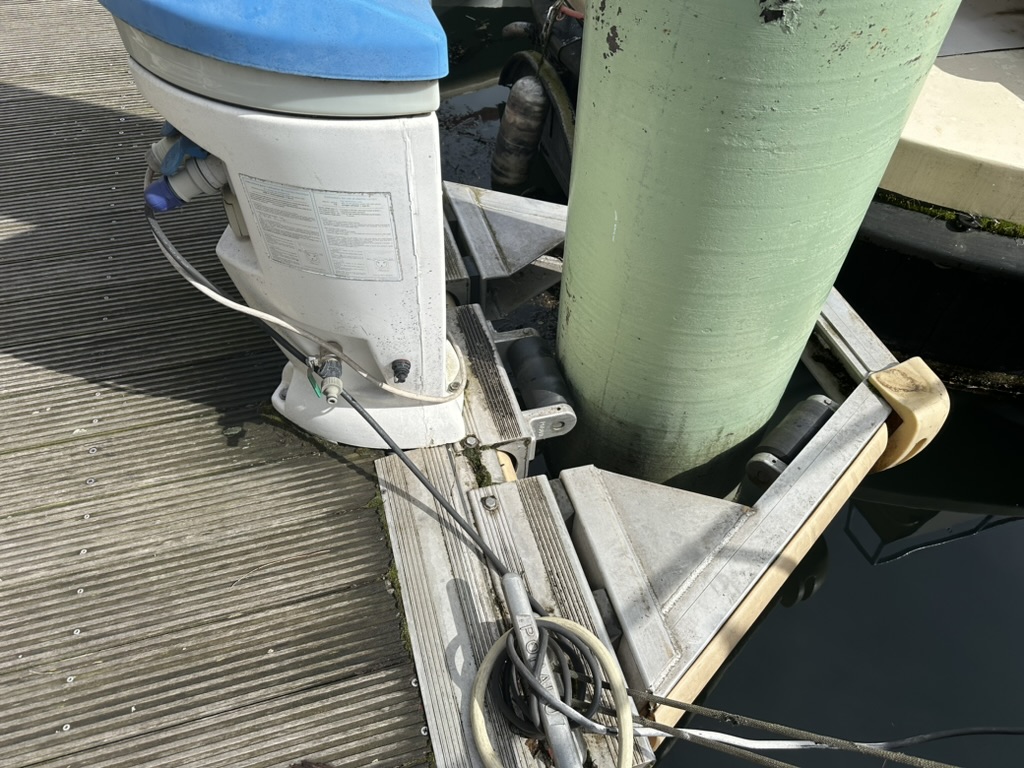
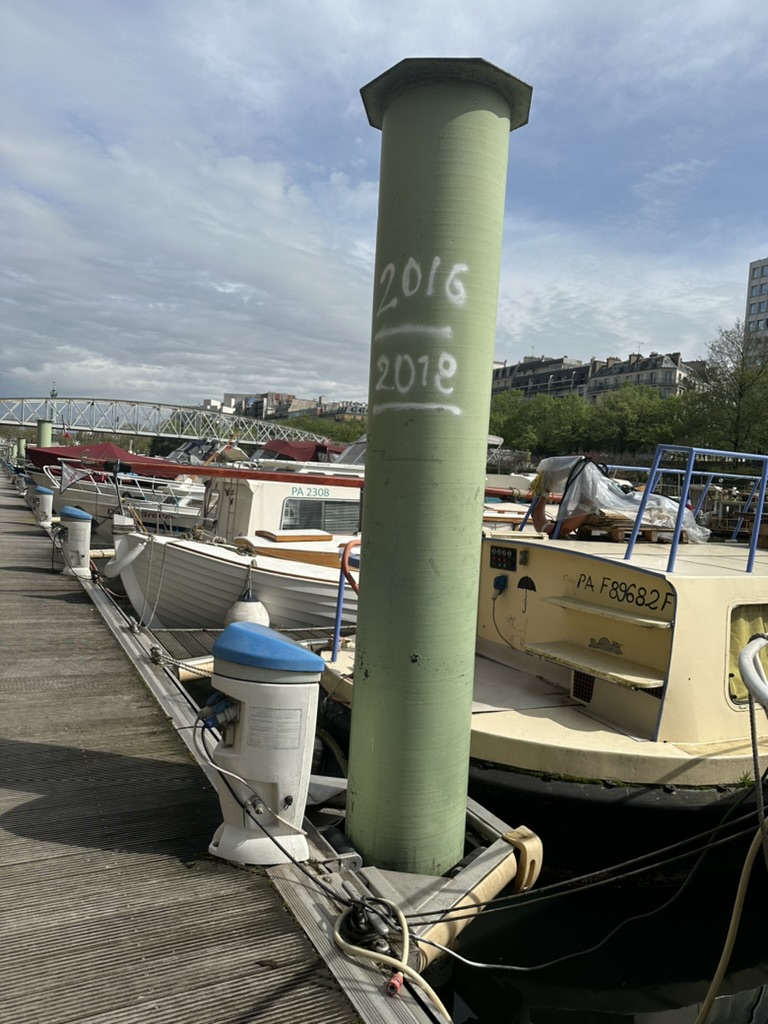
The floating pontoons make us feel more secure – although climbing over two other boats while carrying bags of groceries is a nuisance. The view at night more than makes up for it.
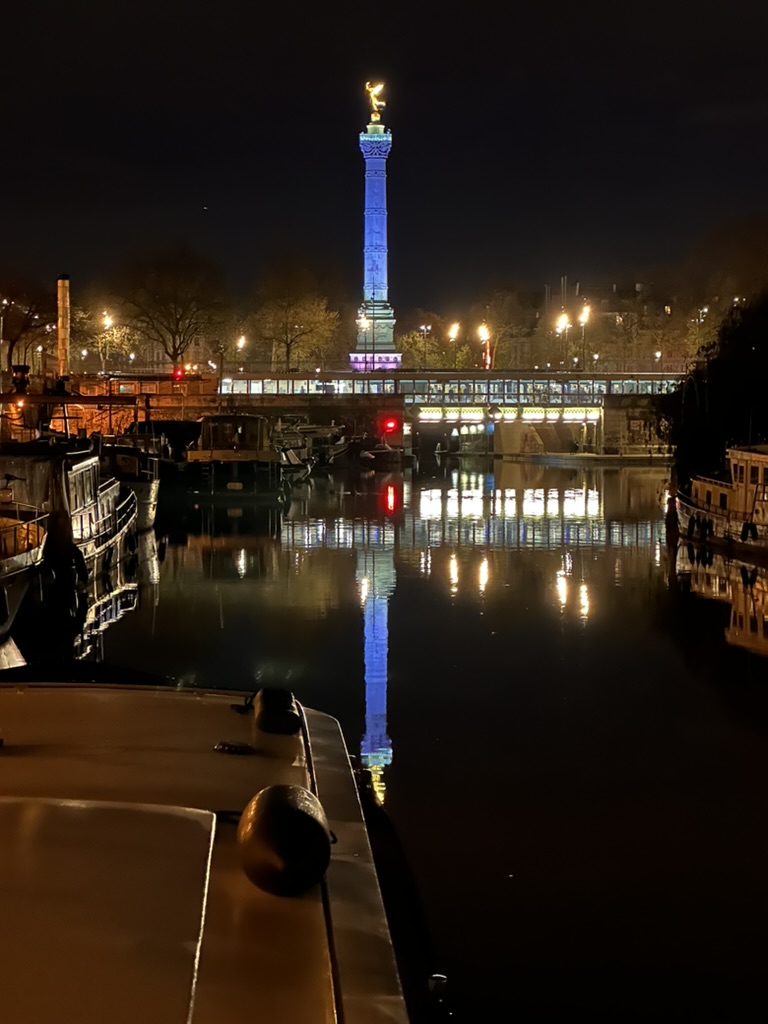
As the water rose, it was time to build a protective wall around the door to the offices behind it. For the second time this spring. Maybe they shouldn’t have been so quick to tear it down just a few weeks ago.
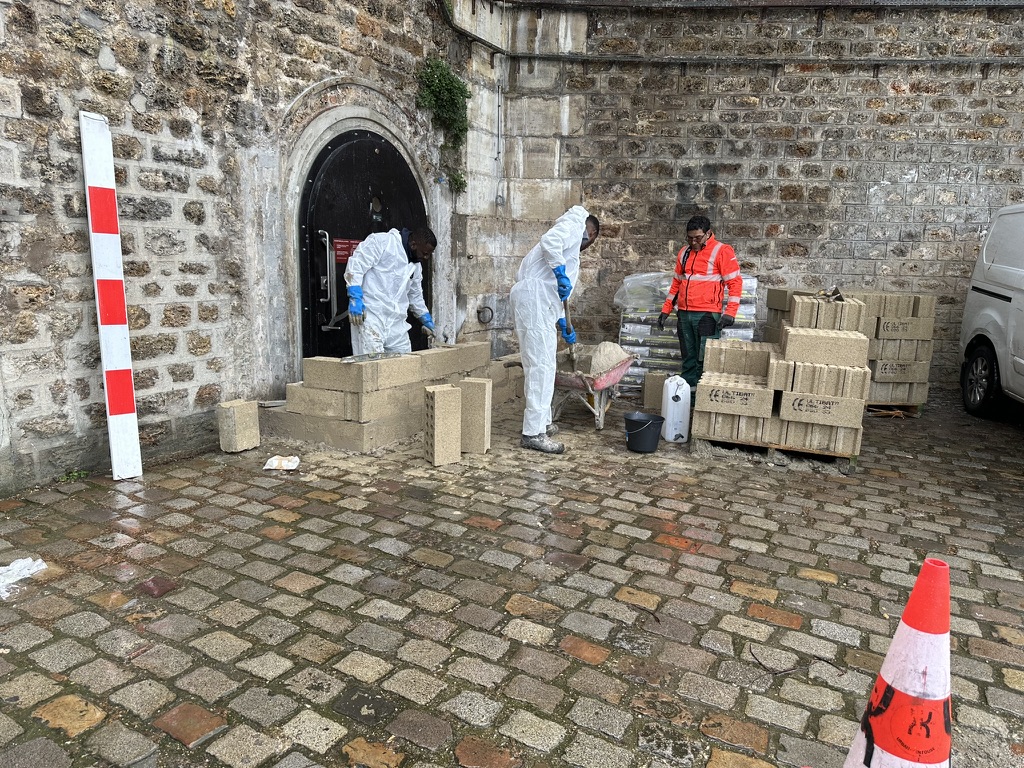
Just in time. With Aleau on a floating pontoon and the wall built, the water levels at the entrance to Arsenal continued to rise.
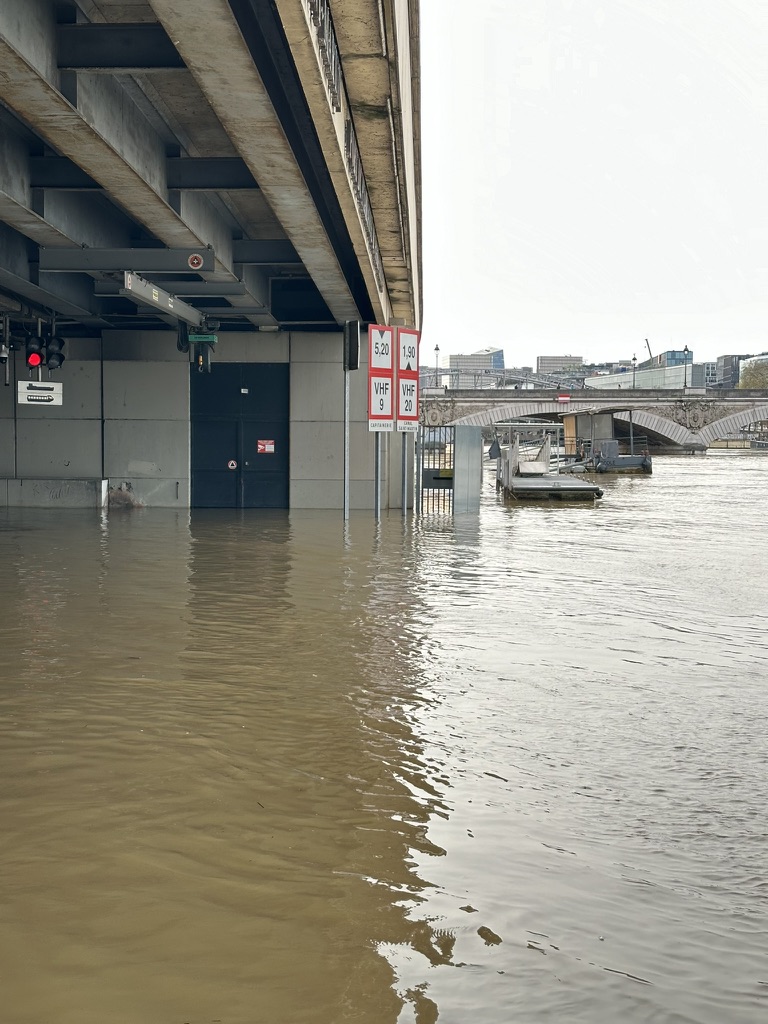
Above, how it looks today. Below, how the entrance normally looks.

The Seine is so high, there’s no need for a lock. Both gates have been left open.
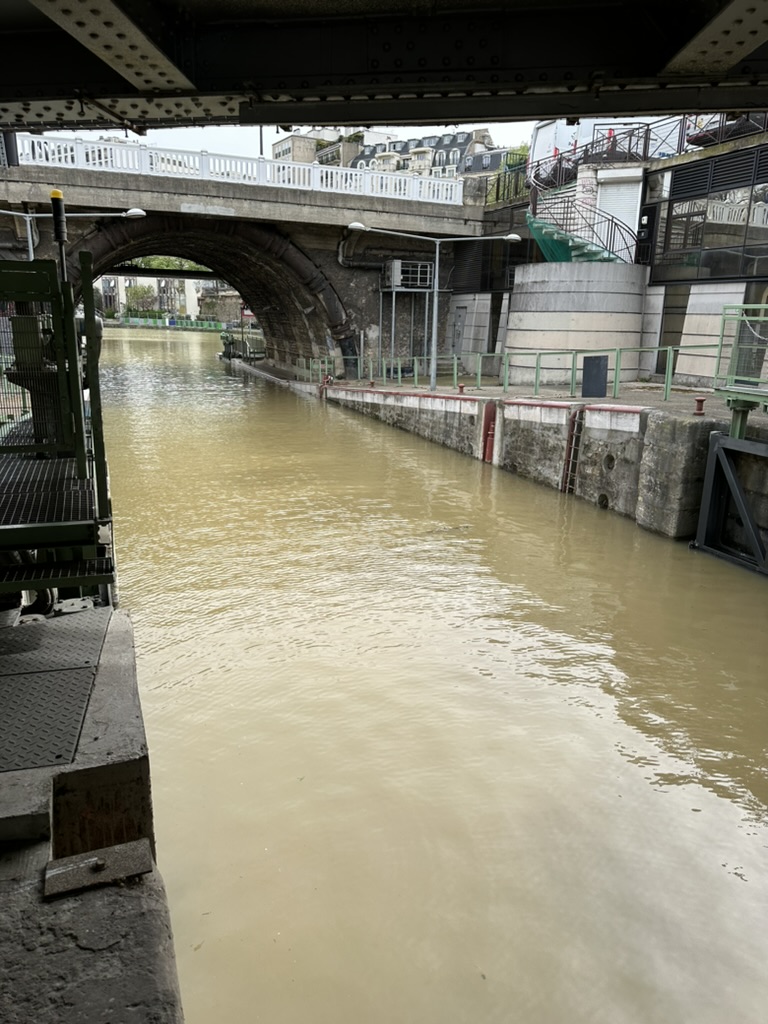
At least the boats in Arsenal can be moved to floating pontoons. Boats moored along the Seine don’t have that option. A long gangway is the only way to reach dry land.
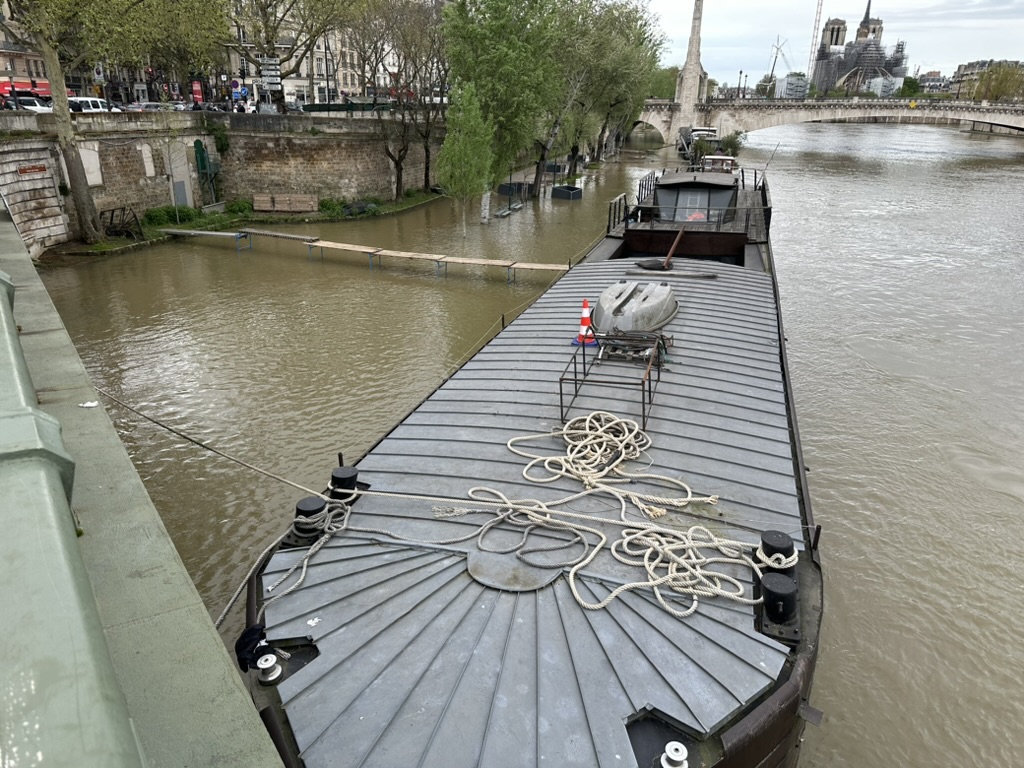
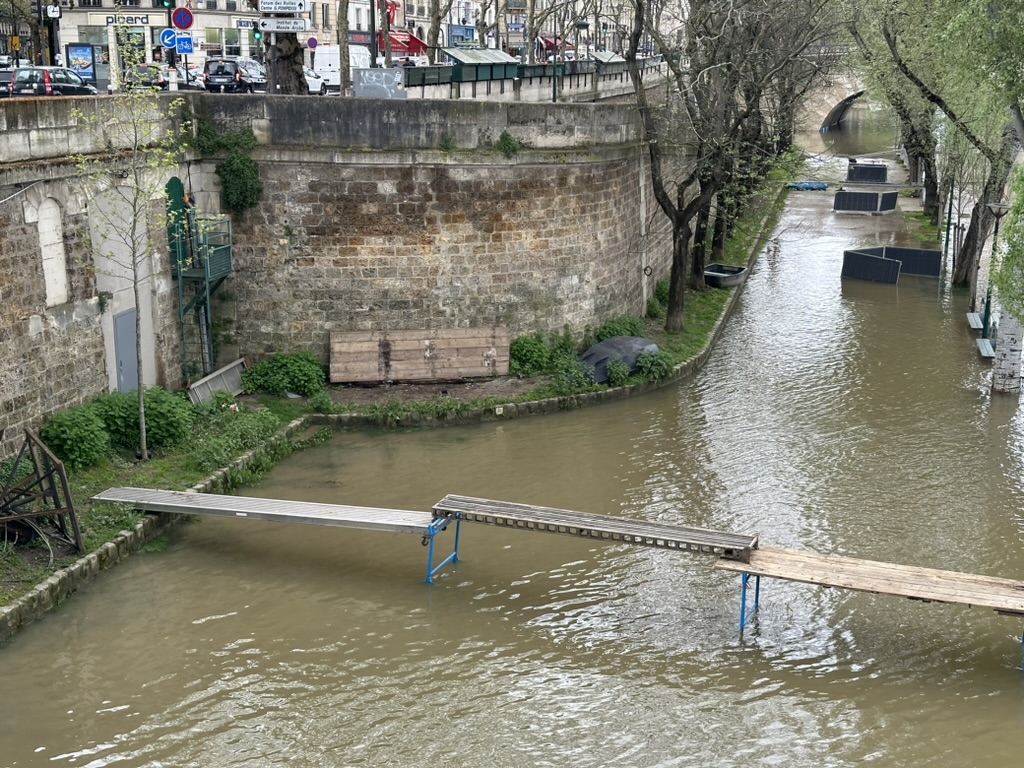
Sometimes, the gangway just isn’t long enough.
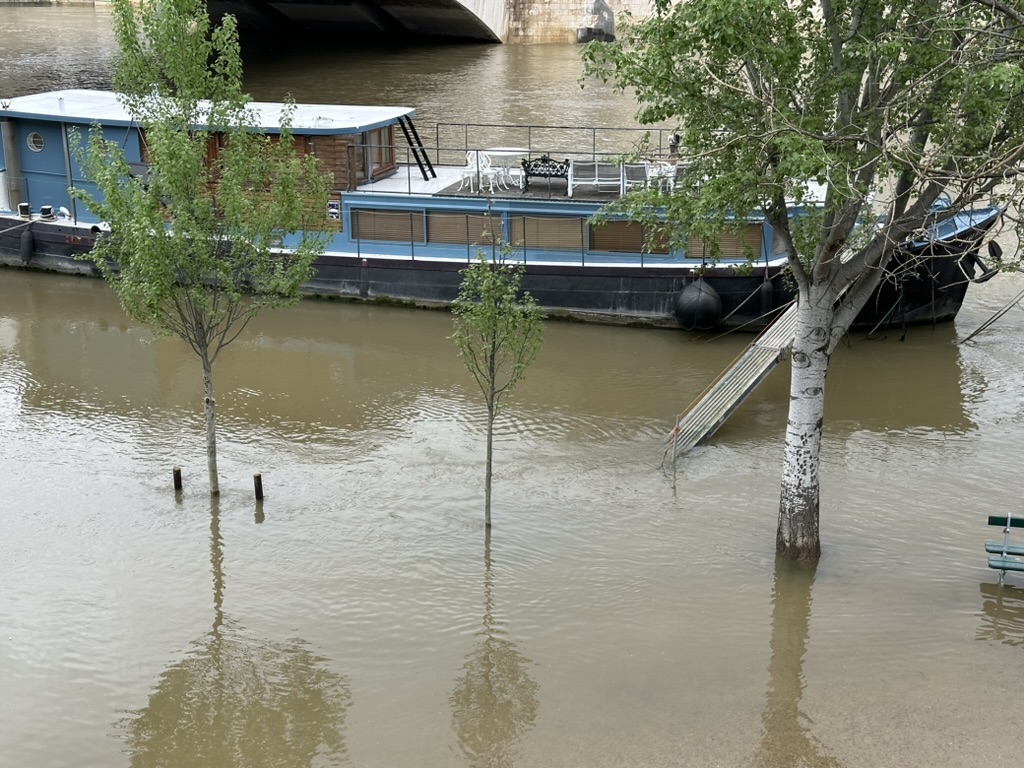
Flooding doesn’t mean just high water. With the floating pontoons, that’s not a problem for us. But floods also speed up the flow of water on the rivers. That can be a real problem for us. The flow of water is measured in cubic-metres-per-second. That’s a measurement I had never heard of. Now, it’s something I check almost daily. When we arrived at Arsenal last October, the flow on the Seine was just over 100 cubic-metres/sec. We had no problem. It’s now flowing at 1,200 cubic-metres/sec. If we went out on the Seine now, Aleau would be swept away.
Our plan was to leave Paris for the Netherlands on March 18. That was more than three weeks ago. It wasn’t safe to leave then. It’s not safe to leave now. We’ve been told it’ll be another two weeks before the Seine slows down. We have friends, fellow bargees, who tell us they don’t make plans. There are just too many variables. We have learned just how true that is.
